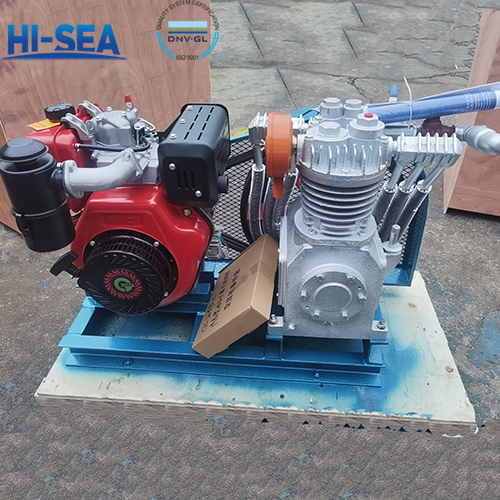
What is a marine emergency air compressor
The emergency air compressor should be driven by a manually started diesel engine or other effective device to ensure initial inflation of the air cylinder.
The emergency air compressor is the original power source for restoring the operation of a ship in a "paralysed" state. The so-called "paralysed ship state" refers to the cessation of operation of the entire ship's power device, including the power source, and the failure of compressed air and starting batteries, which are used for auxiliary purposes such as operating the main propulsion device and restoring the main power source.
Overview
Terms and definition:
1. Rated operating condition: the working condition of air compressor jointly determined by the rated speed and the rated discharge pressure.
2. Standard inlet state: In front of the suction port, the suction temperature is 20 ℃, the pressure is 0.101MPa, the relative humidity is zero, and the inlet temperature of the cooling water is 15 ℃ (water-cooled air compressor).
3. Volume flow rate: The volume of air measured at the exhaust port of the air compressor per unit time under rated operating conditions and converted to the temperature and pressure of the air sucked in before the first stage inlet (including the volume of air collected from the air storage tank, intercooler, etc.)
4. Nominal speed: The ideal speed rounded from the rated speed for designing and comparing the performance of air compressors
Speed.
5. Standard volumetric flow rate: The volumetric flow rate converted to the volume of air at standard suction state and nominal speed.
Types:
Air compressors are divided into V-shaped, W-shaped, or upright structural types without crossheads.
The air compressor adopts water-cooled (seawater cooling or fresh water cooling) or air-cooled.
A diesel engine drives the emergency air compressor.
The transmission mode of the air compressor is a direct connection or belt.
For more marine air compressor information, please click here.





